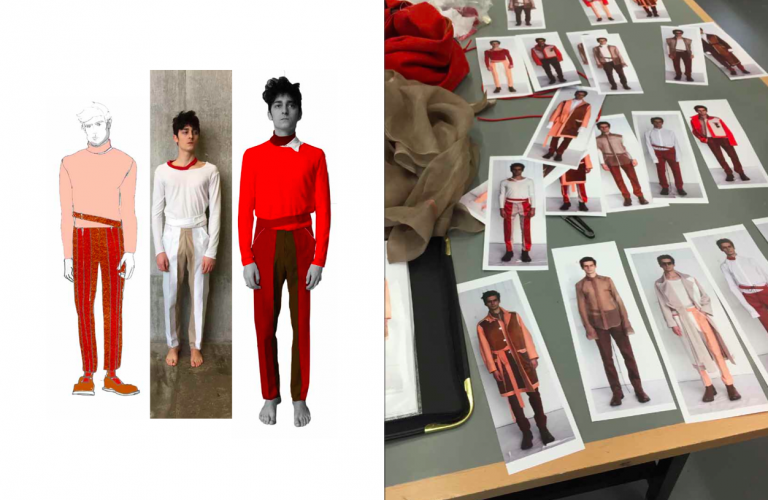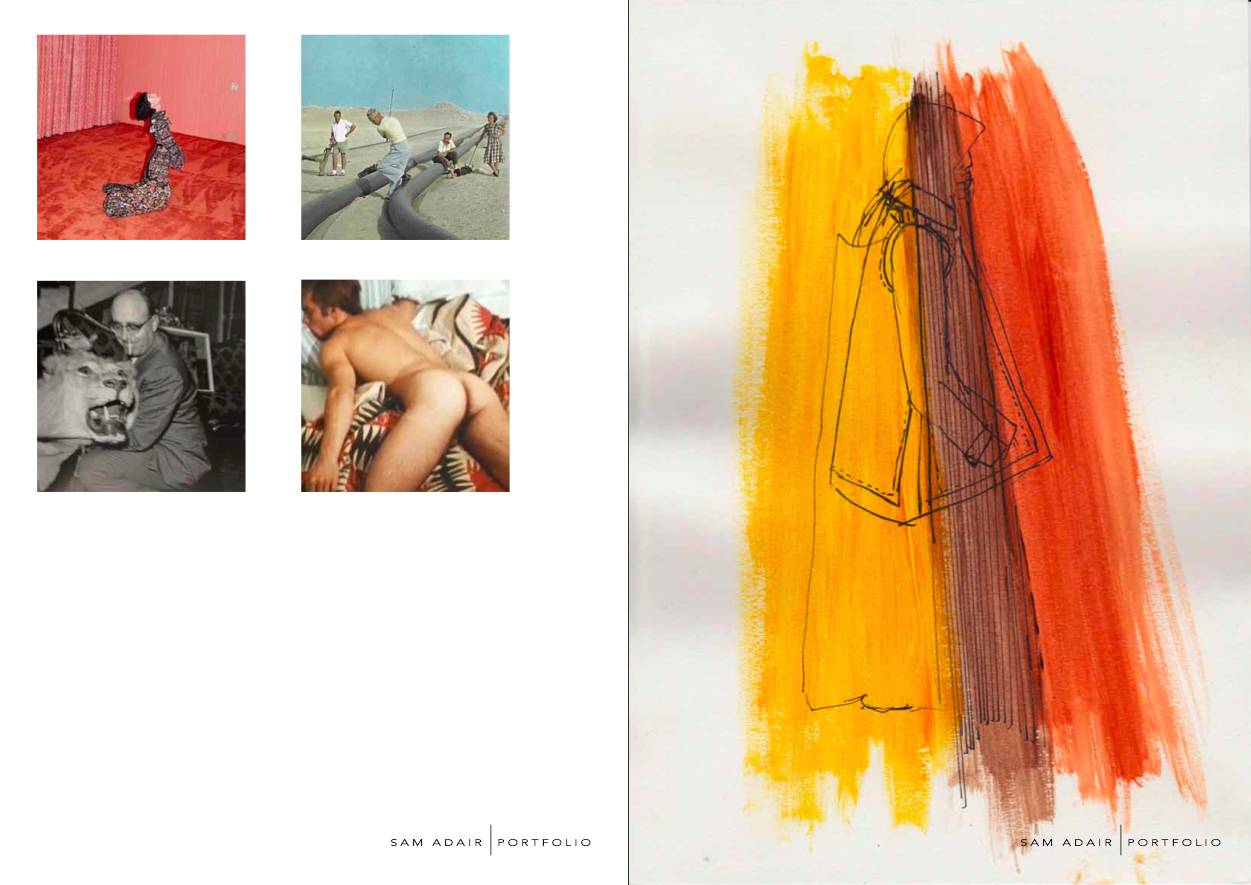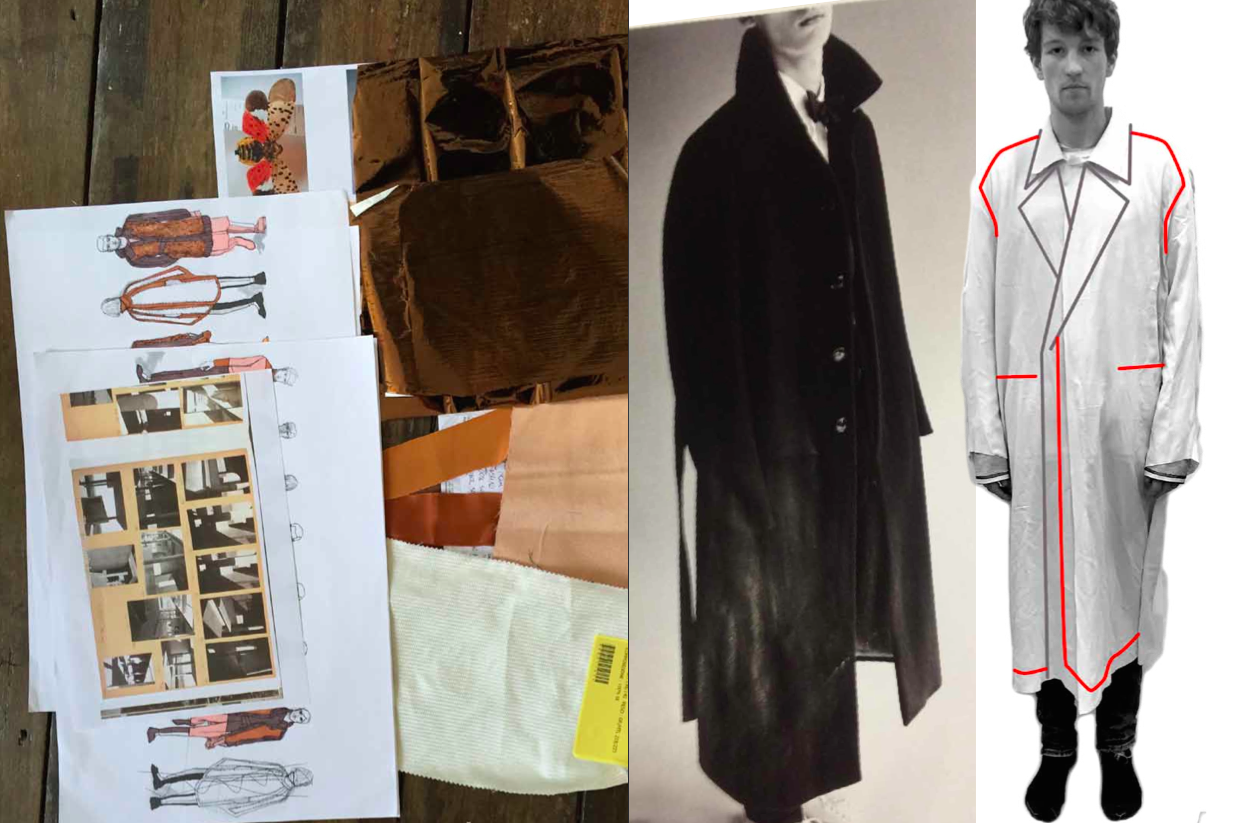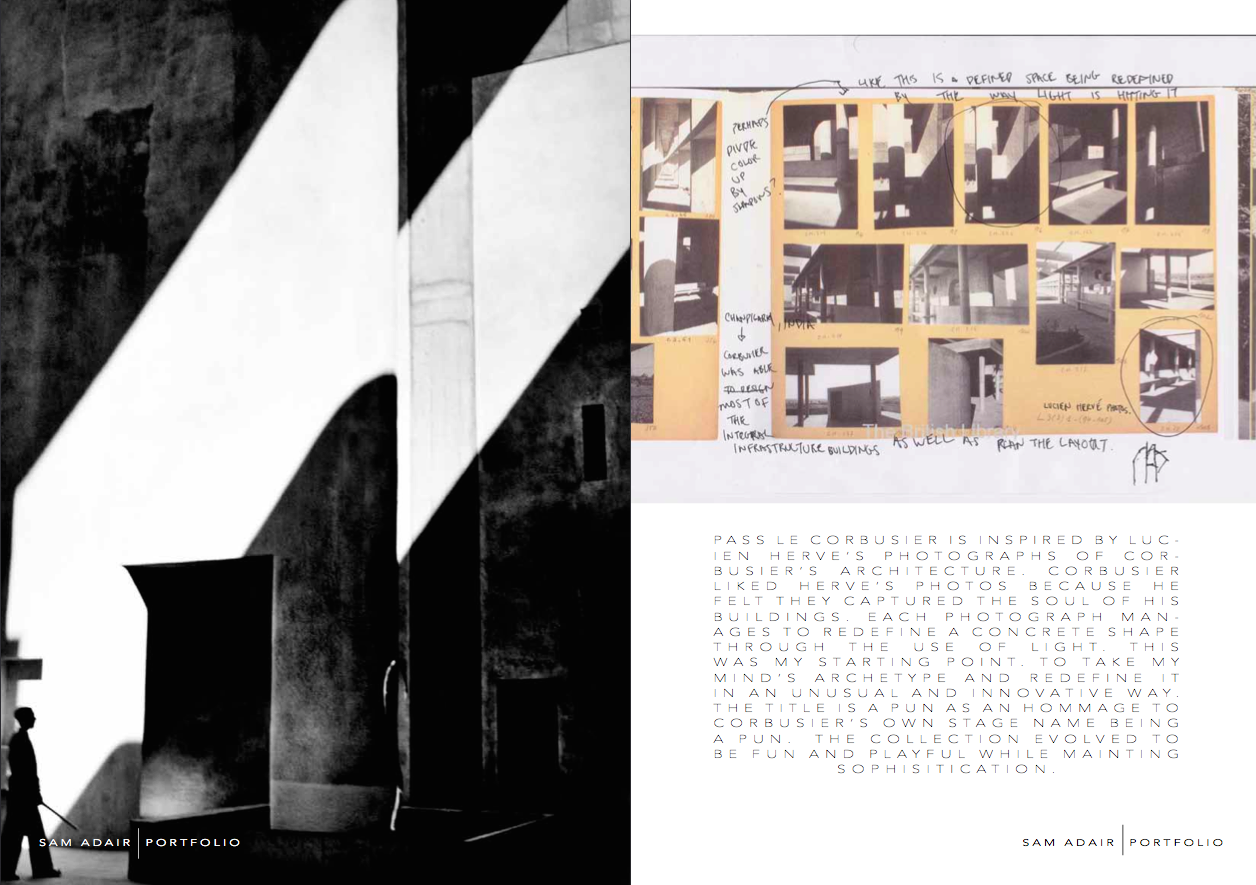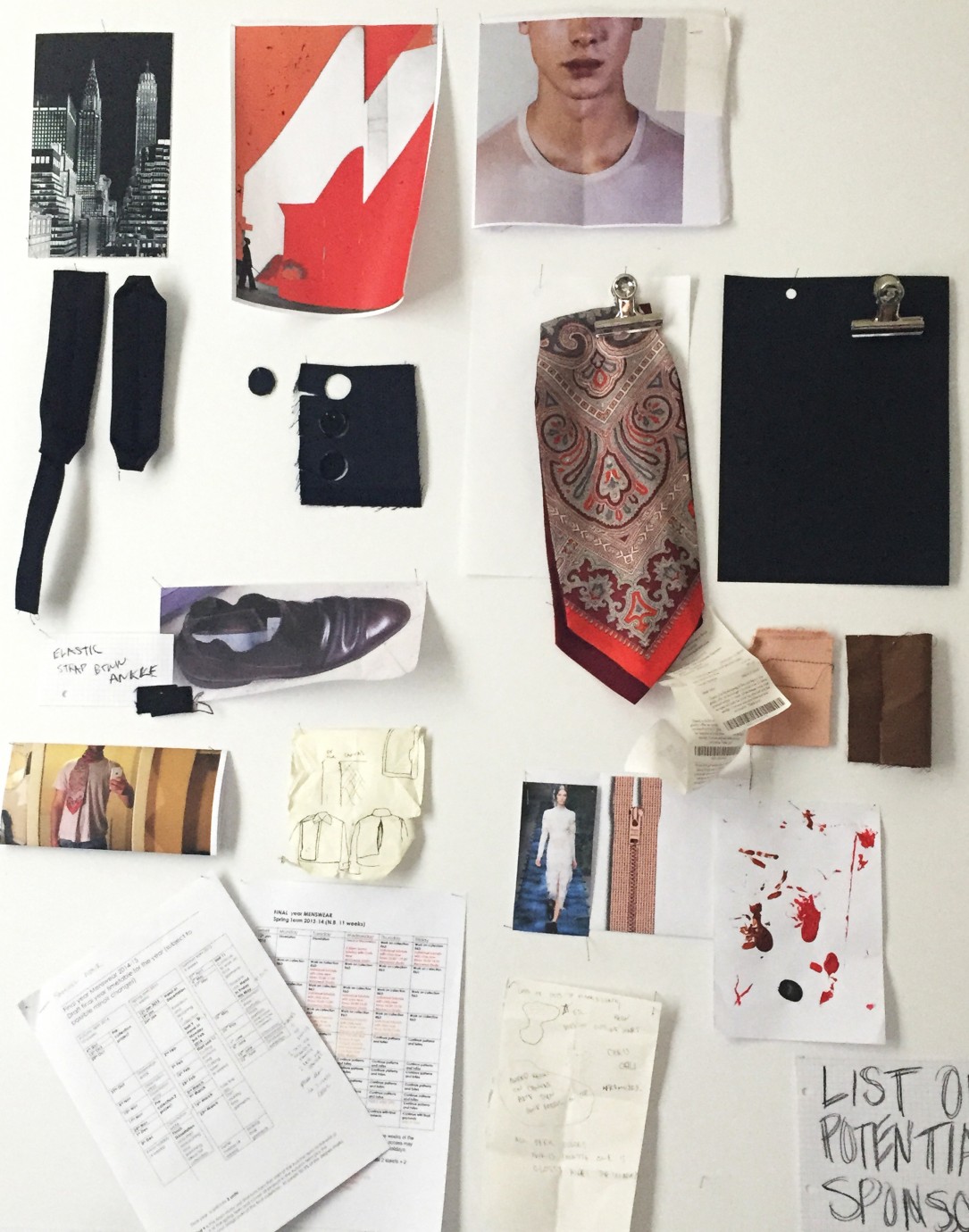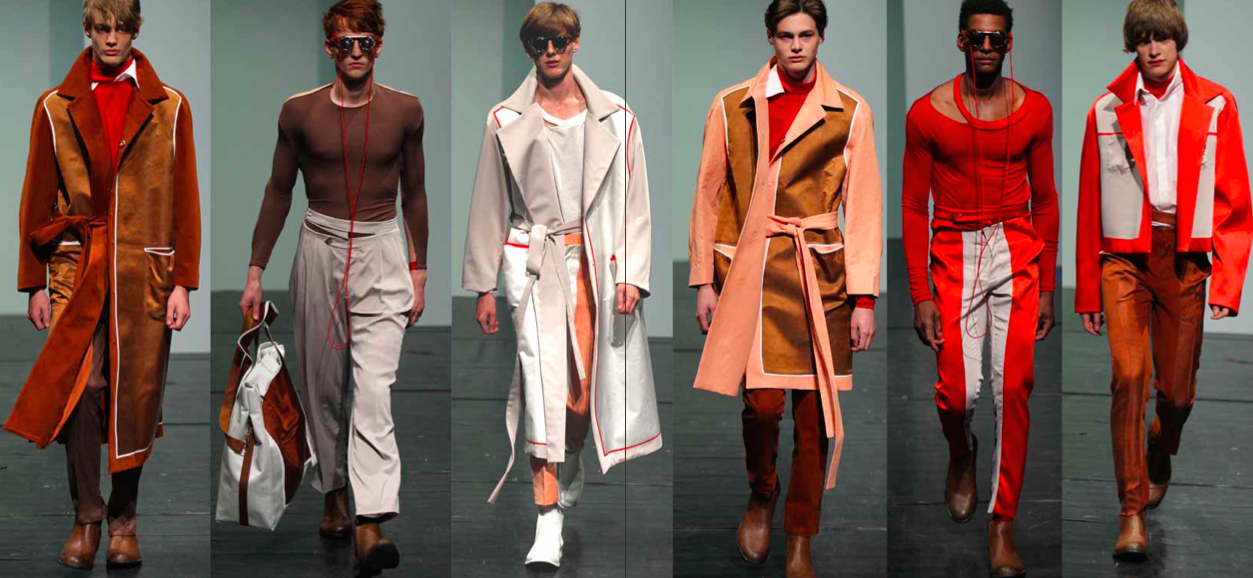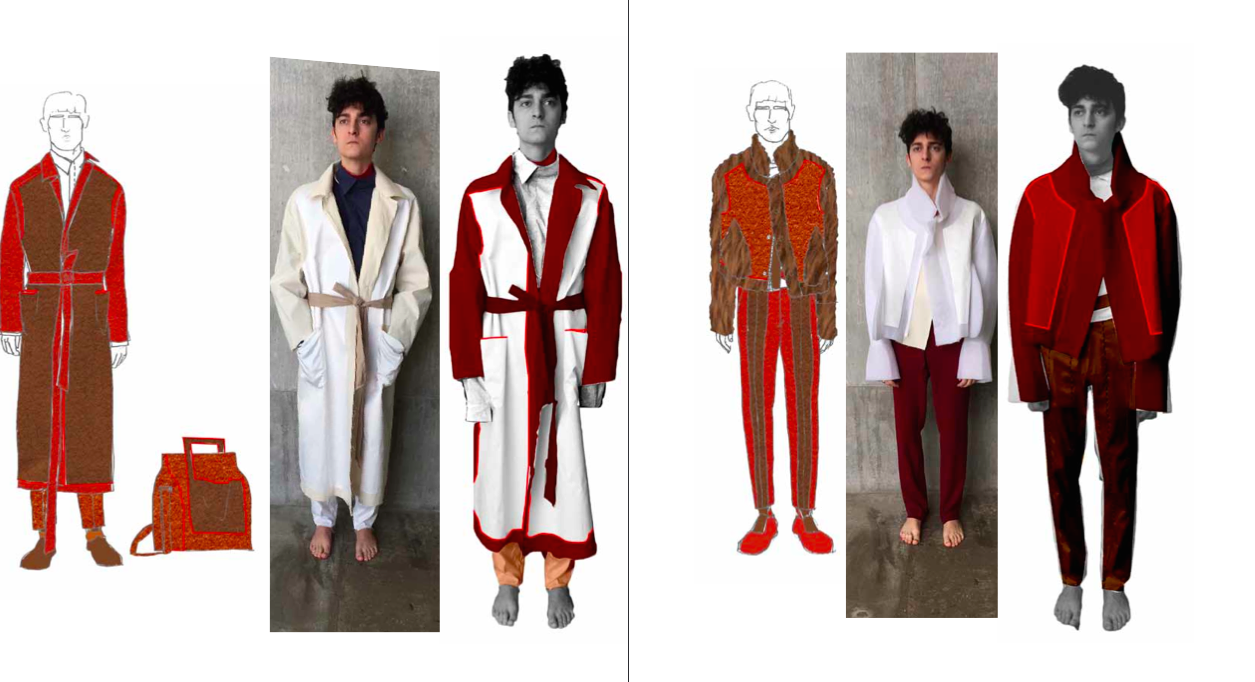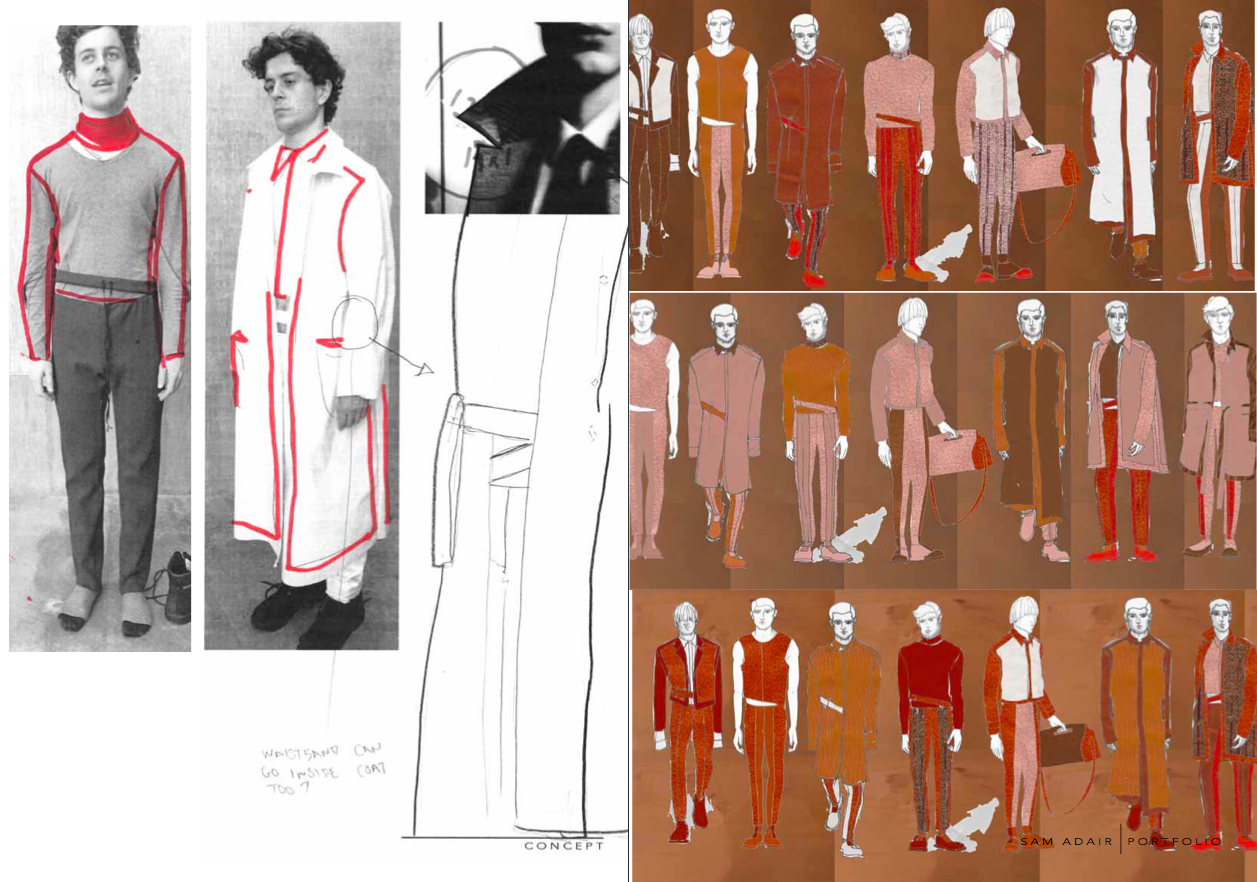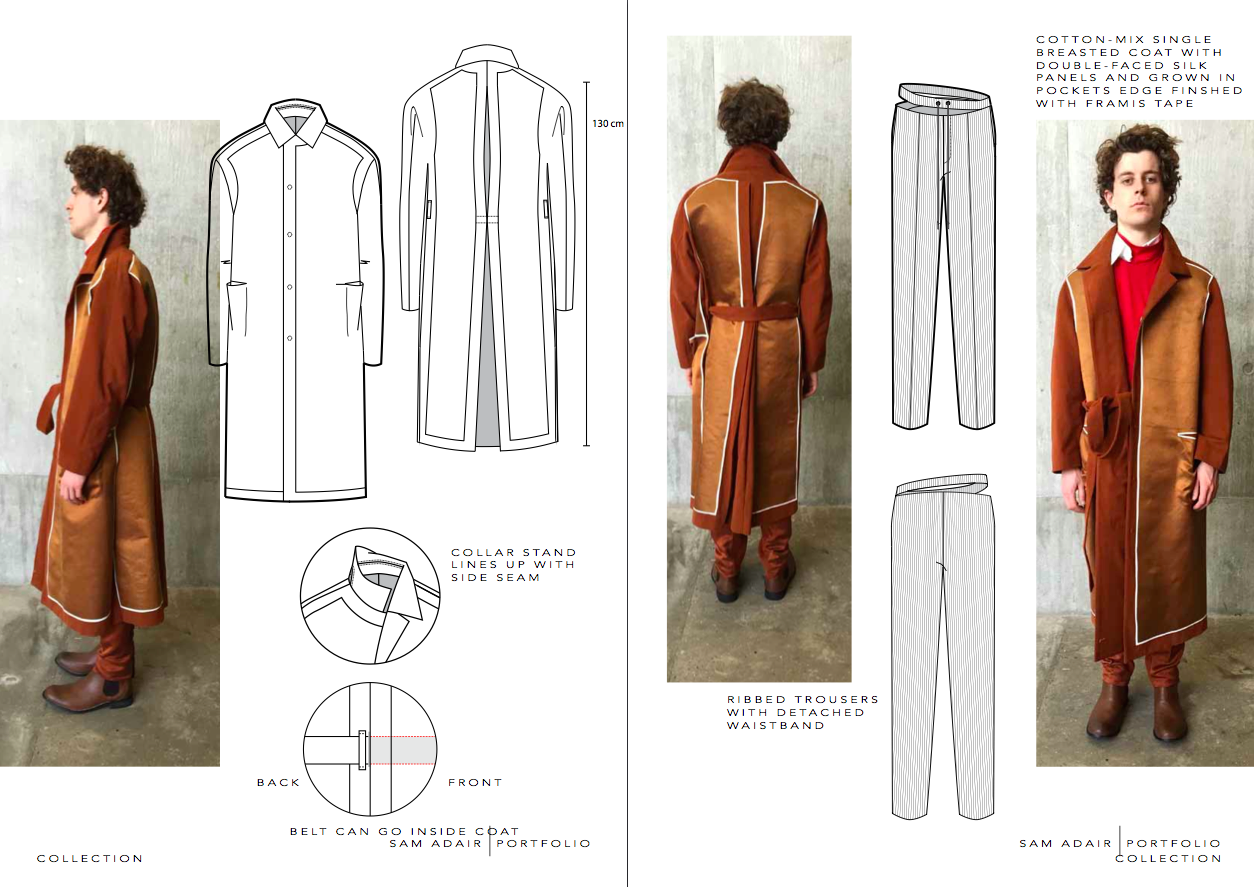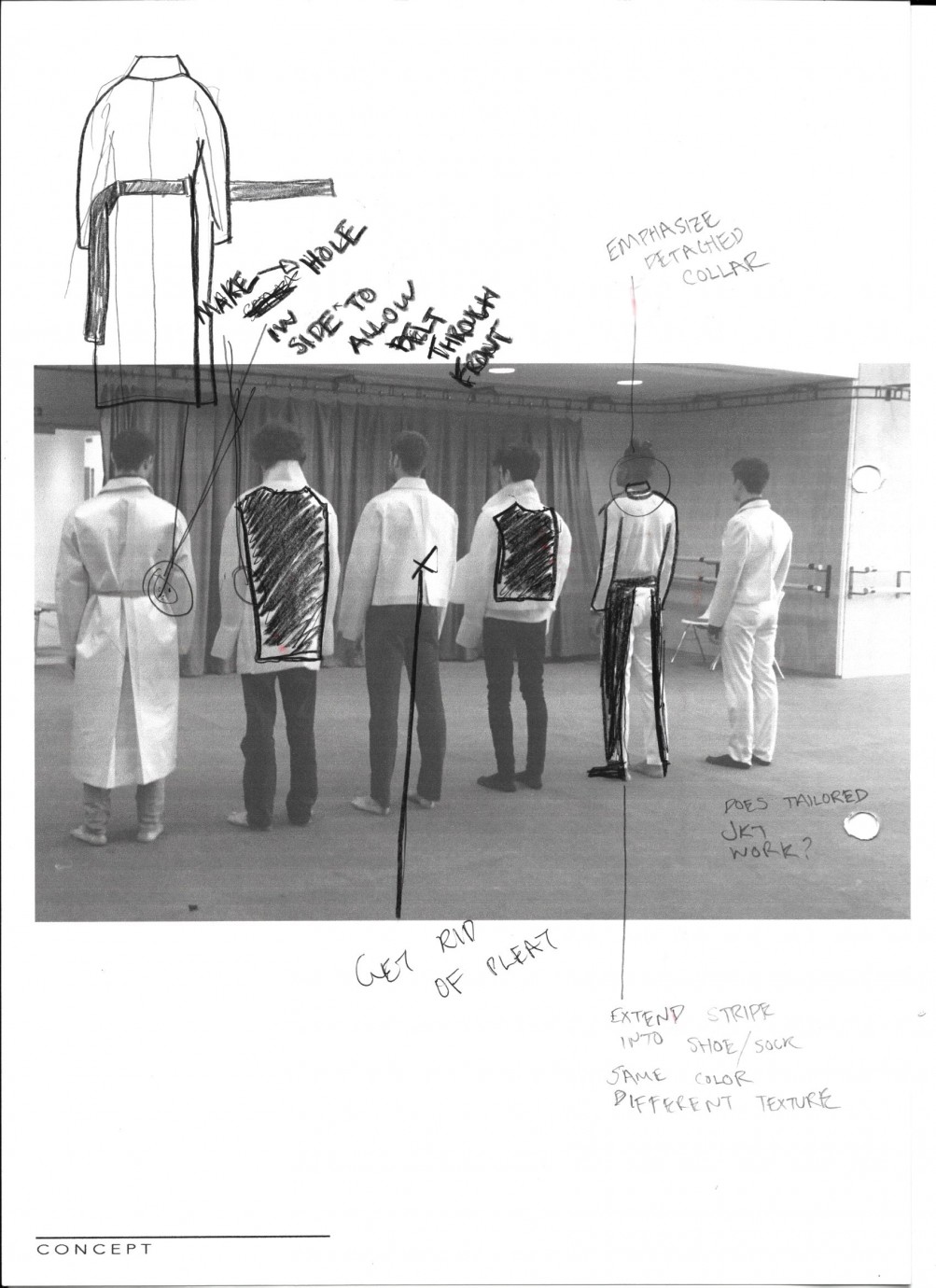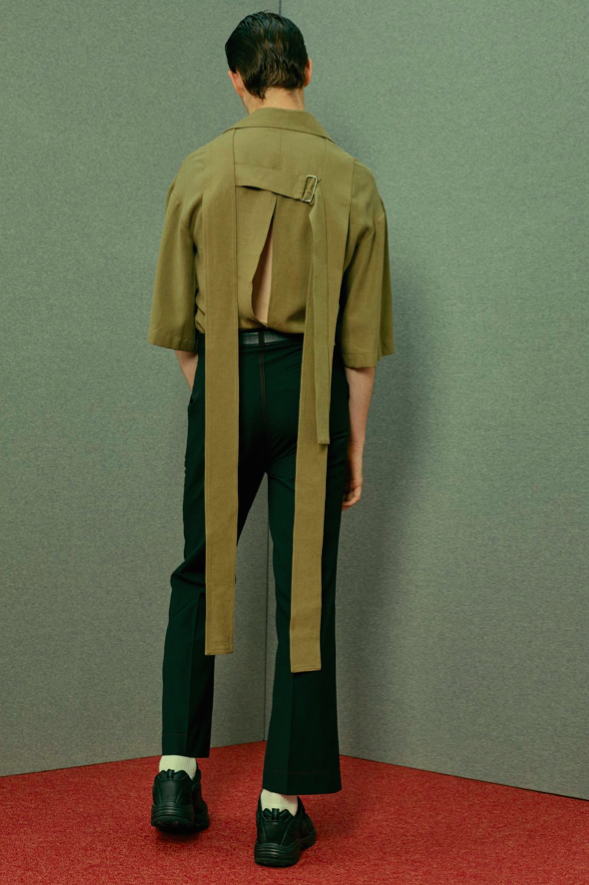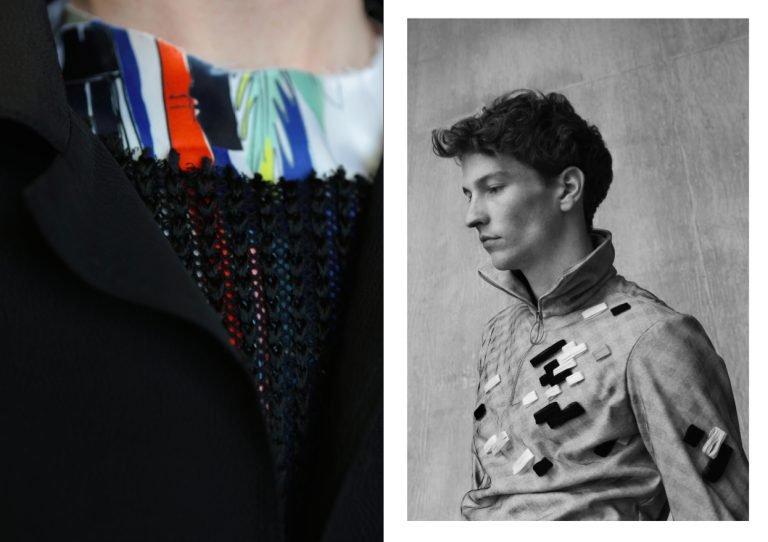“I’M TOO FOCUSED ON THE FUTURE AND THE POSITIVE CHANGES THAT ARE HAPPENING TO BE DETERRED FROM BEING A FASHION DESIGNER.”
BA Menswear graduate Sam Adair grew up in a village about 20 minutes north of Manhattan, Hastings-on-Hudson; was a good high school student who loved languages and travelling and always threatened to attend university abroad. He first ended up studying Fine Art and Economics in Los Angeles, but always had an intention of doing fashion design, so after a while he dropped out and moved back to NYC, where he designed restaurants. His revelation moment of realising he wanted to embark on a journey in the fashion industry came to him as a coming-out moment in which he sat down his parents, and told them: “Mom and Dad, I’m a fashion designer,” to which they responded, “We know and love you no matter what,” along with a couple of tears and a hug. Then, he went off to London after a friend suggested him to study Fashion at Central Saint Martins, and got a degree in it.
How did you spend your time when you were not at Central Saint Martins?
GTL –gym tan laundry, and, CSA –creating stupid acronyms.
I’d say for a good portion of final year it was working at home or sleeping – though the latter didn’t happen so much. Most of the time I’m probably bopping about Hackney with the occasional excursion to West London. The Royal Academy is one of my favorites, and I always try and see their exhibitions.
Whereabouts do you hang out?
It depends on my mood and the weather. London Fields is the best. And the best café in London is Fingers Crossed *drops mic*.
What kind of music do you listen to?
While making the final collection I was going through a disco phase. Marvin Gaye and Diana Ross were played a lot. I designated Kate Bush’s Wuthering Heights as the studio packing-up song.
How would your friends describe you in a couple of keywords?
I think they would describe me as creative, open-minded, and passionate. They would probably say that my head is in the clouds.
If you could travel in order to get inspiration for collections, where would you go to and for how long?
I want to go to Shanghai for at least a month. I went when I was about 8 and I can recognize landmarks and see in pictures how it’s changed. The Chinese countryside would also be amazing to see.
What would you eat there?
Something local, grass fed, self-actuated and massaged. Real talk though: Xao Long Bao (soup dumplings).
How many hours would you averagely sleep without deadlines?
Sleep goals are 8 hours a night. In real life I’m probably at 7 hours a night.
How many with deadlines?
I usually will have one all-nighter and 6 hours a night. As they say, “No sleep ‘till Brooklyn”… So I haven’t slept in months.
“I THINK LONDON – ALTHOUGH INCREDIBLY UNAFFORDABLE — IS MORE OPEN AND NURTURING TOWARDS NEW TALENT THAN NEW YORK, WHICH I THINK PARTIALLY RELATES TO YOUNG ARTISTS BEING ABLE TO WORK FREELANCE AND NOT HAVE TO WORRY ABOUT NEEDING HEALTH CARE BENEFITS FROM THEIR EMPLOYERS.”
What pisses you off most about the industry?
Right now, the way clothing is produced and manufactured makes me pretty angry. I remember bringing it up in placement year and companies not caring enough to consider alternatives. It was pretty frustrating.
Why do you keep going, even when you can read a headline every day about the horrific pace and state of fashion?
I keep going because there are a lot of possibilities for change and it’s enjoyable. I’m really inspired by Paul Van Zyl’s work at Maiyet because it considers fashion production from a perspective that is hidden from the consumer and from what these ‘headlines’ are trying to bring attention to. Miayet is really smart to not only share their business model but to also make progressive steps in production that consider the environment and social justice. Their factory in India is LEED certified and brings together politically opposed Muslim and Hindu women to work as a team – it’s brilliant. I guess what I’m trying to say is I’m too focused on the future and the positive changes that are happening to be deterred from being a fashion designer. I love what I do and I’m excited about how it can get better.
What did you lose in the past couple of years at Central Saint Martins?
Initially menswear was a little constrictive and there is a certain way of thinking needed to communicate best with the tutors. At first this stunted my creativity, but I like a challenge.
I saw you made a list of potential sponsors — who were on there? How did you select, and did you have any strategies to get sponsors?
At the beginning of the year I went to a seminar about how to ask people for sponsorship hosted by school and they suggested making a list of who you know that might have a potential connection to something you need. So the list was mostly family friends and some companies I’ve worked at – Alexander Mcqueen and Todd Snyder NY. My strategy was to email and sell the school as a venue for the companies to get press.
You’ve got a picture of high-rise buildings on your mood board — you were raised in New York: what does the city have that London doesn’t?
New York is a different flavor. Both cities are metropolitan. I actually think London – although incredibly unaffordable — is more open and nurturing towards new talent, which I think partially relates to young artists being able to work freelance and not have to worry about needing health care benefits from their employers. New York has great nightlife and food. The food. Also everyone at home is super friendly.
What do you love most about New York?
The energy. It’s a happy place.
What is your favourite movie about New York?
Can I say 30 Rock? #TeamBroadCity.
Fran Lebowitz or Woody Allen?
Jon Stewart.
“ELEGANCE IS ABOUT CLEAN LINES. GARMENTS THAT ARE CLEVERLY CONSTRUCTED TO IMPROVE FUNCTION. DRAMA.”
You’ve got a couple of Corbusier influences in your work and you’ve written down: “he was able to design most of the integral infrastructures as well as the layout.” What are your thoughts on the architecture within fashion, and the construction of the clothes? As you studied menswear, surely a large focus must have been on the insides of a garment?
Inside pockets are probably the most important part in a jacket or coat, if not the most important. I love architecture and have always, along with making clothes, redesigned spaces I live in. It’s always part of my research. When I start to design, one of the first things I consider is the space that the garments would be worn in. Lucien Herve’s photos of Corbusier’s work are such beautiful deconstructions of concrete objects and that translated into a key concept that I considered while reconstructing and hopefully innovating details in the collection.
What is elegance to you?
Clean lines. Garments that are cleverly constructed to improve function. Drama.
What is luxury?
Sleep. Drama.
What is comfort?
No limitations.
What is the meaning of masculinity?
I think modern masculinity is open-minded, thoughtful, proud, and sexy.
What menswear garment should be revolutionised?
Probably the bra.

